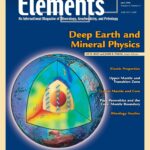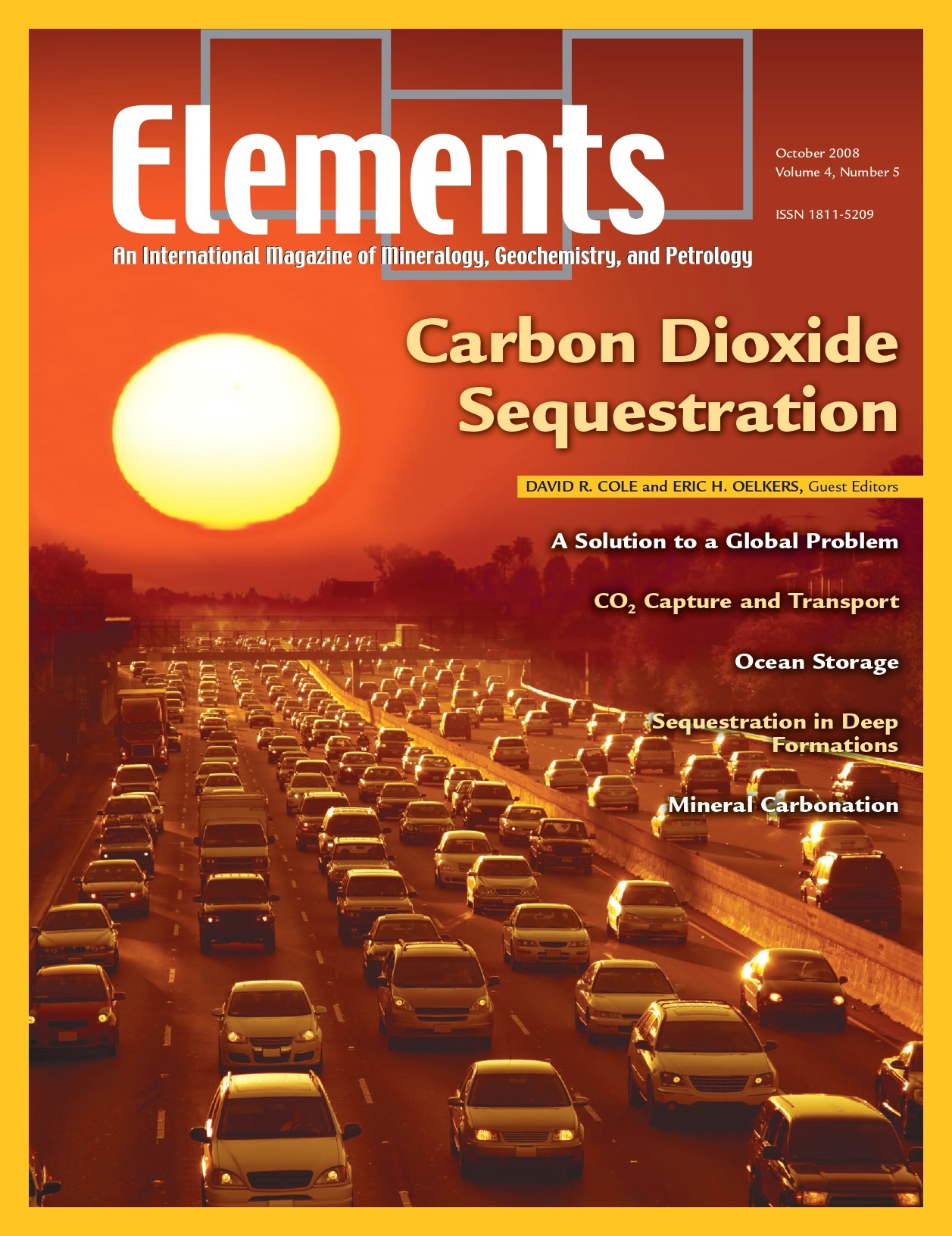
Deep Earth And Mineral Physics, June 2008, Vol. 4, No. 3
June 28, 2024
Gems, June 2009, Vol. 5, No. 3
June 28, 2024Carbon Dioxide Sequestration, October 2008, Vol. 4, No. 5
$20.00
Storage of carbon in the subsurface involves introduction of supercritical CO2 into rock formations beneath the surface of the Earth, typically at depths of 1000 to 4000 meters. Although CO2 is a relatively benign substance, the volume being considered is large.
Carbon Dioxide Sequestration
October 2008, Vol. 4, No. 5
Storage of carbon in the subsurface involves introduction of supercritical CO2 into rock formations beneath the surface of the Earth, typically at depths of 1000 to 4000 meters. Although CO2 is a relatively benign substance, the volume being considered is large. If developed to its envisaged potential, geologic sequestration will entail the pumping of CO2 into the ground at roughly the rate we are extracting petroleum today. To have the desired impact on the atmospheric carbon budget, CO2 must be efficiently retained underground for hundreds of years. Any underground storage system will have to account for the natural characteristics of subsurface formations; some are advantageous for storage while others are not. When foreign materials are emplaced in subsurface rock formations, they change the chemical and physical environment. Understanding and predicting these changes are essential for determining how the subsurface will perform as a storage container. The specific scientific issues that underlie sequestration technology involve the effects of fluid flow combined with chemical, thermal, mechanical, and biological interactions between fluids and surrounding geologic formations. Complex and coupled interactions occur both rapidly as the stored material is emplaced underground, and gradually over hundreds to thousands of years. The long sequestration times needed for effective storage and the intrinsic spatial variability of subsurface formations provide challenges to both geoscientists and engineers. A fundamental understanding of mineralogical and geochemical processes is integral to this success.
Why You’ll Love Elements Magazine:
- Expert Contributors: Articles written by renowned researchers in the field of geoscience.
- Engaging Content: Join a community of readers who are passionate about Elements.
- Exceptional Quality: Each issue is printed on high-quality paper with stunning visuals and detailed illustrations that bring complex scientific concepts to life.
Order your copy of the October 2008 issue of Elements magazine today and delve into carbon dioxide sequestration.
Related products
-
Large Igneous Provinces: Origin And Environmental Consequences, December 2005, Vol. 1, No. 5
$20.00Large igneous provinces record major outpourings of igneous rocks, both on the continents and in ocean basins. Their origin is still vigorously disputed, with models invoking mantle plumes, thermal effects of the lithosphere, and meteorite impacts.
-
Nanogeoscience, December 2008, Vol. 4, No. 6
$20.00At first glance, nano and Earth seem about as far apart as one can imagine. Nanogeoscience seems to be a word connecting opposites.
-
Medical Mineralogy And Geochemistry, December 2007, Vol. 3, No. 6
$20.00Medical mineralogy and geochemistry is an emergent, highly interdisciplinary field concerned with both normal and pathological interactions between minerals or amorphous inorganic solids and biomolecules or cells within the human body, and the transport and fate of prions and protein toxins in the soil environment. Prior research has, appropriately, focused on the complex genetic and molecular biological aspects, but there is a growing recognition of the vital need for understanding the surface and bulk properties and reactivities, especially at the challenging nanoscale characteristic of biomacromolecules and biominerals.




